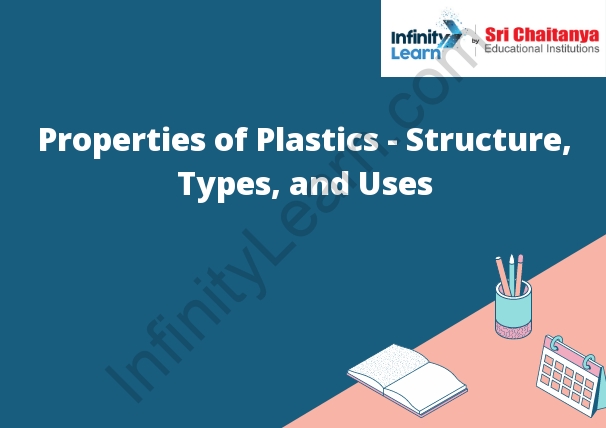Table of Contents
What is Plastic?
Plastic is a synthetic or semi-synthetic polymer. It is made from petrochemicals, and is often used to make products that are lightweight, durable, and easy to clean. Properties of Plastics – Structure Types and Uses.

Properties of Plastics
Most plastics are synthetic materials made from polymer chains of monomers. The physical and chemical properties of plastics depend on the polymer chains that make up the plastic. Some plastics are very strong and resistant to degradation, while others are softer and more susceptible to degradation. Some plastics are transparent, while others are opaque. The properties of plastics can also be modified by adding additives, such as colorants, fillers, and plasticizers.
Different Types of Plastic
There are many different types of plastic, and each type has its own unique properties. Some of the most common types of plastic include polyethylene terephthalate (PET), polyvinyl chloride (PVC), polypropylene (PP), and polystyrene (PS).
PET is a type of plastic that is often used to make beverage bottles. It is strong and durable, and it is also able to withstand high temperatures.
PVC is a type of plastic that is often used to make pipes and tubing. It is strong and durable, and it is also able to withstand high temperatures.
PP is a type of plastic that is often used to make food containers. It is strong and durable, and it is also able to withstand high temperatures.
PS is a type of plastic that is often used to make packaging materials. It is strong and durable, but it is not able to withstand high temperatures.
Polyethylene
is a polymer with the chemical formula (CH2CH2)n. It is a colorless, odorless, and tasteless plastic that is widely used in packaging and insulation. It is made from the monomer ethylene, which is derived from natural gas or petroleum.
Polyethylene is a thermoplastic, meaning that it can be melted and molded into new shapes. It is one of the most common plastics in the world, and it is used to make grocery bags, milk jugs, water bottles, and many other items. It is also used as insulation in homes and buildings.
Polyethylene Properties
Polyethylene is a thermoplastic polymer with the chemical formula (C2H4)n. It is the most common plastic in the world. Polyethylene is a lightweight, low-density material that is transparent and colorless. It has a wide range of applications, including packaging, labeling, and insulation.
Structure of Polyethylene
Polyethylene is a thermoplastic polymer made from the monomer ethylene. It has a molecular weight of 100,000 to 1,000,000. Polyethylene is a colourless, odorless, and tasteless plastic. It is insoluble in water but soluble in organic solvents. Polyethylene is a semicrystalline material with a melting point of about 130 degrees Celsius. It is a good electrical insulator and has a low coefficient of friction.
Types of Polyethylene
There are three types of polyethylene: high-density polyethylene (HDPE), low-density polyethylene (LDPE), and ultra-low-density polyethylene (ULDPE).
HDPE is the most common type of polyethylene. It is strong and durable, and it is often used to make plastic bottles, containers, and pipes.
LDPE is a softer type of polyethylene. It is often used to make plastic bags and wraps.
ULDPE is the softest type of polyethylene. It is often used to make plastic films and foams.
Uses of Polyethylene
Polyethylene is used in a variety of applications, including:
-Packaging materials for food and beverages
-Packaging materials for consumer products
-Containers for medical supplies and pharmaceuticals
-Insulation for electrical cables
-Construction materials such as pipes and fittings
Recycling of Plastic
The recycling of plastic is the process of recovering waste or scrap plastic and reprocessing it into new plastic products. This helps reduce the amount of waste going to landfill, and lowers the consumption of new plastic, which helps reduce environmental pollution.
Properties of Plastics – Structure Types and Uses.









